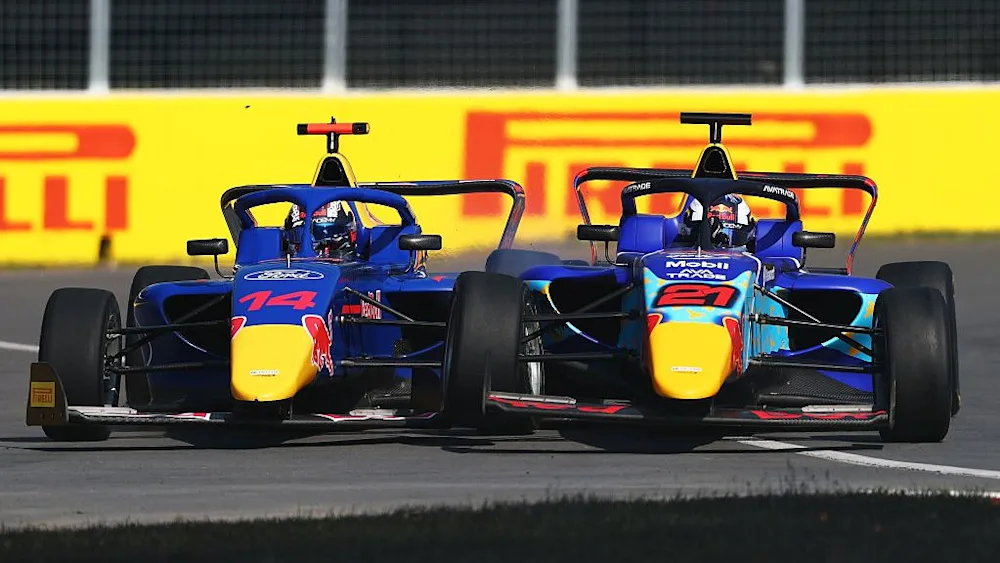Essential details: IndyCar to introduce hybrid system at Mid-Ohio
- Archie O’Reilly

- May 14, 2024
- 4 min read
Updated: Jan 6
Written by Archie O’Reilly
The NTT IndyCar Series has confirmed that its hybrid era will commence during the Honda Indy 200 at Mid-Ohio Sports Car Course on the opening weekend of July.
The all-new hybrid power unit was initially supposed to be introduced at the start of the 2024 season but an announcement in December revealed it would be pushed back beyond the 108th Running of the Indianapolis 500.
“The strength of this uncharted partnership between Chevrolet and Honda has pushed this innovative project to the grid in 2024,” IndyCar President Jay Frye said. “The IndyCar-specific hybrid power unit will bring a new and exciting element to the series with additional energy and overtake options. We cannot wait to see the start of this new era.”
In the seven months since testing commenced, 28 drivers across 10 different teams have successfully completed 23,518 miles of hybrid testing.
Team Penske, Chip Ganassi Racing, Arrow McLaren and Andretti Global took part in the bulk of hybrid testing after the system was initially paired with the 2.2-litre, twin-turbocharged V-6 engine last August. It was not until late March that the remainder of the teams got their first and, thus far, only test on the Indianapolis Motor Speedway (IMS) road course.
As well as the IMS road course, testing also took place on the road courses at Barber Motorsports Park, Road America and Homestead-Miami Speedway. Oval testing took place on the Indianapolis Motor Speedway and World Wide Technology Raceway ovals, with a full-field test at the Milwaukee Mile penned in for 11th June.
The bumpy Sebring International Raceway was used to mirror a street course venue to ensure all racing disciplines were covered in testing.
The introduction of hybrid power to IndyCar is part of the series’ continued effort to ensure it can produce “the most competitive motorsport on the planet” as it hands drivers additional overtake options. The intention is for drivers to have more choices and control over their use of the push-to-pass-like system to create a more exciting racing product.
Drivers will be able to regenerate energy, which can be redeployed unlike the existing time-limited push-to-pass system, through braking, throttle position or manual regeneration via selected steering wheel paddles and buttons. This stored energy can then be deployed through pressing a button similar to that which enables current push-to-pass usage.
The hybrid unit is made up of a low-voltage Motor Generator Unit (MGU) and Energy Storage System (ESS), fitting inside the bellhousing between the internal combustion engine and gearbox. During regeneration, the MGU builds power to be stored in the ESS and can be deployed when the driver wishes - like with Formula 1’s Energy Recovery System (ERS).
The ability to deploy this additional horsepower is intended to create even greater overtaking opportunities and is available in addition to the existing push-to-pass system on road and street courses.
Push-to-pass will continue to have a restriction on how long it can be used for in single bursts and across the duration of a race. The hybrid power unit does not have a race-long restriction but will limit the amount of energy deployed per lap depending on track length.
It is intended that the combined use of push-to-pass and energy deployment from the hybrid unit will enable an additional 120 horsepower, with more expected to come as development continues and evolves in the coming years.
One further perk of the hybrid system is that drivers will be able to restart the car by themselves if they stall on track, as is often the case after spins. Without the hybrid power unit, red flags are often thrown in practice in qualifying, and cautions in races, due to the need for the AMR Safety Team to re-fire stalled cars.
Another safety element is a low voltage system.
There has been some discord between experienced drivers with relation to whether introducing the hybrid system mid-season, with the threat of unreliability and a change in the competitive landscape, could impact the championship battle. Mid-Ohio marks the start of a nine-race run with the hybrid system until the conclusion of the 17-race season.
“During the development of any new technology, extensive analysis and testing are done to identify as many issues as possible,” Eric Warren, General Motors’ Executive Director of Motorsports Competition, said. “During the development of any new technology, extensive analysis and testing are done to identify as many issues as possible.
“We support IndyCar’s decisions throughout this process to study testing data carefully and make sure that when the hybrid technology is integrated, the operation and performance are exactly what is expected.”
On the Honda Racing Corporation USA (HRC) side, president David Salters has noted that “more than a quarter” of their total sales in 2023 were hybrid vehicles.
“This is exciting new technology and, like all things new, has presented challenges to us at HRC as we have stepped in with our competitors to help IndyCar make the hybrid system compact enough, powerful enough, light enough and reliable enough to work within the highly-restricted confines of an IndyCar chassis,” he added.
IndyCar has already been running with a lighter gearbox, bellhousing and aeroscreen in 2024 in anticipation for the introduction of the hybrid system.













Comments